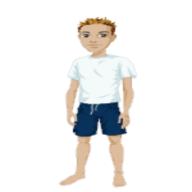有關日本歷史資料要用英文作答.
唔該哂!謝謝
有關日本歷史資料 (英文).......超急
2007-10-06 7:17 pm
回答 (4)
2007-10-06 7:43 pm
✔ 最佳答案
The written history of Japan began with brief appearances in Chinese history texts from the first century AD. However, archaeological research indicates that people were living on the islands of Japan as early as the upper paleolithic period. Following the last ice-age, around 12,000 BC, the rich ecosystem of the Japanese Archipelago fostered human development, yielding the earliest known pottery during the Jōmon period. Japanese history has alternating periods of long isolation punctuated by radical, often revolutionary, influences from the outside world.[edit] Paleolithic
The earliest known polished stone tools in the world. Stone axes, Hinatabayashi, B site, Shinanomachi, Nagano. Pre-Jōmon (Paleolithic) period, 30,000 BC. Tokyo National Museum.Main article: Japanese Paleolithic
The Japanese Paleolithic (旧石器時代, kyū-sekki-jidai) covers a period from around 100,000[1] to 30,000 BC, when the earliest stone tool implements have been found, to around 12,000 BC, at the end of the last Ice-age, which corresponds to the beginning of the Mesolithic Jōmon period. The 35,000 BC date is most generally accepted: any date of human presence before 30,000-35,000 BC is controversial, with artifacts supporting a pre-35,000 BC human presence on the archipelago still being of questionable authenticity.[2]
The Jōmon period (縄文時代, Jōmon-jidai?) lasted from about 14,000 BC to 300 BC.
The first signs of civilization and stable living patterns appeared around 14,000 BC with the Jōmon culture, characterized by a mesolithic to neolithic semi-sedentary hunter-gatherer lifestyle of wood stilt house and pit dwelling and a rudimentary form of agriculture. Weaving was still unknown and clothes were often made of bark. Bear worship was common, as many place names still today have the word "kuma" (bear) in them. Around that time, however, the Jōmon people started to make clay vessels, decorated with patterns made by impressing the wet clay with braided or unbraided cord and sticks (Jōmon means "patterns of plaited cord"). Some of the oldest surviving examples of pottery in the world may be found in Japan, based on radio-carbon dating, along with daggers, jade, combs made of shells, and other household items, although the specific dating is disputed. The household items suggest trade routes existed with places as far away as Okinawa. Many believe and DNA analysis suggests that the Ainu, an indigenous people found mostly today on the northern island of Hokkaidō, but previously had lived on Honshū, and potentially other groups, as mentioned in the Kojiki, such as the tsuchi-gumo (English: dirt spiders), are descended from the Jōmon and thus represent descendants of the first inhabitants of Japan. Also, entire wood dwellings (that normally would rot away) have been dug up in northern Japan that were preserved in ice, dated back to before 8000 BC (radio-carbon dating).
According to disputed archeological evidence based on carbon-14, the Jōmon people created the first known pottery type in the world, dated to the 11th millennium BC.[3] The Jōmon people(s) were making clay figures (one popular type called dogu that was buried with the dead) and vessels decorated with patterns made by impressing the wet clay with braided or unbraided cord and sticks with a growing sophistication.
仲有好多的...去睇下啦..
http://en.wikipedia.org/wiki/History_of_Japan
希望幫到你=]
2007-10-06 7:24 pm
2007-10-06 7:23 pm
2007-10-06 7:22 pm
go to here la , many thingd to c ga , http://en.wikipedia.org/wiki/History_of_Japan
收錄日期: 2021-04-25 21:58:22
原文連結 [永久失效]:
https://hk.answers.yahoo.com/question/index?qid=20071006000051KK01291


